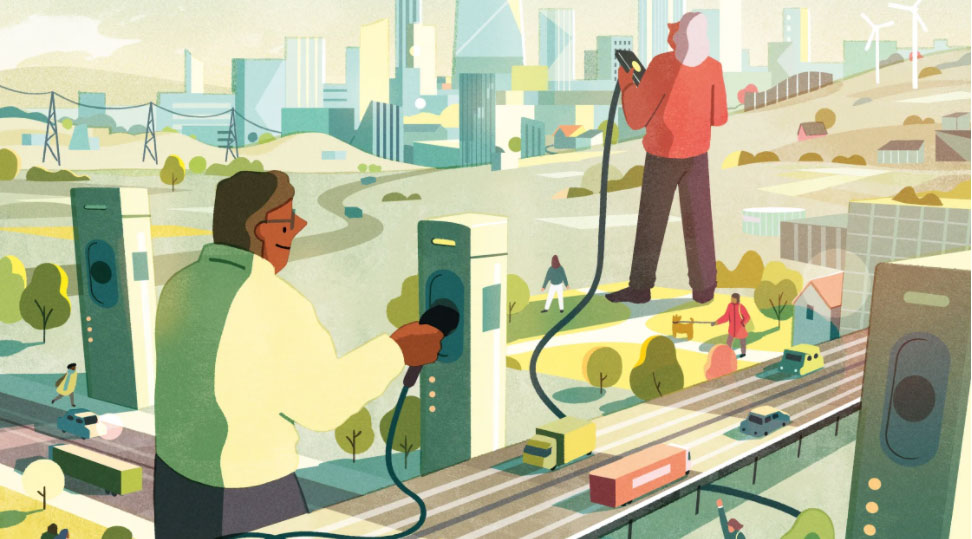As electric goods-delivery lorries start to hit roads there will be massive demand for infrastructure that facilitates them.
The rate of adoption of electric passenger vehicles has skyrocketed in recent years and will only increase. In the US, the federal administration is pushing for electric vehicles (EVs) to make up 50 per cent of all new car sales by 2030. The UK target is even higher, with a proposed ban by then on all new petrol and diesel van and car sales. Electrification of medium- and heavy-goods vehicles is not far behind and is following a steeper trajectory.
The big question is how all those vehicles will be powered. In 2022, a new asset class will emerge to support EV charging infrastructure. To avoid getting burnt, though, investors will need to understand the opportunities and risks that surround this complex intersection of energy, transportation and technology.
In 2022, we will see the beginnings of a significant deployment of electric medium-goods vehicles, with heavy-good vehicles to follow soon after. However, there will still be a significant gap between delivering the vehicles and having the widespread ability to charge them.
In both the US and Europe, charging these new fleets will put overburdened grids under more stress. To power 50 articulated lorries, for example – the type often seen on motorways – the grid will have to dispatch a peak load of 50 megawatts of energy: an order of magnitude required by a large factory or a hyperscale data centre. That means that investment in charging infrastructure needs to start now.
Fleet-charging equipment will also be different. Smaller charging units have become a familiar sight in motorway service stations and city roadsides – taking energy directly from the grid and used mostly during the day for quick power-ups. However, fleets of heavy-goods EVs charging simultaneously will require on-site electricity generation and storage, as well as robust, grid-
interactive, demand-side management.
As these new integrated load and energy sources are introduced, they will have the capability to be a flexible resource, one that is potentially capable of supporting the grid by reducing load or even pushing power onto the grid when needed. They can even act as a sink for power when there is excess supply. Smarter controls and grid rules that allow more flexible resources will help ease the increase in demand from EV charging stations.
All of this will require more capital, risk-management, operations and energy expertise than most organisations will have in-house, and will lead to a new sector emerging of specialist charging-
infrastructure providers. The key to scaling EV-charging infrastructure in time to meet demand will be attracting investment into this nascent asset class, which could prove to be difficult. As well as understanding the science and logistics of charging at scale, investors will need to be able to step in and recontract or even operate a facility themselves. Contracts for EV charging are very different from those in more familiar asset classes, such as solar and wind infrastructure; they will likely be shorter in term than the underlying asset-financing term and may not always be from creditworthy entities. Asset owners and investors will need to be able to manage the recontracting risk that comes at the end of the contract period and what happens if a customer walks away.
Next year, charging infrastructure will offer a once-in-a-lifetime opportunity for investors to enter a multibillion-dollar market at the ground level. However, they will have to develop a thorough understanding of consumer demand, real estate, capital markets and energy to be able to provide finance at a rate favourable enough to allow this new asset class to grow rapidly, while still giving them a return. In many jurisdictions, the public and private sector are finally coming together to support this effort, but, as we will discover when those first fleets of medium-goods EVs hit the road in 2022, there is much work to be done







